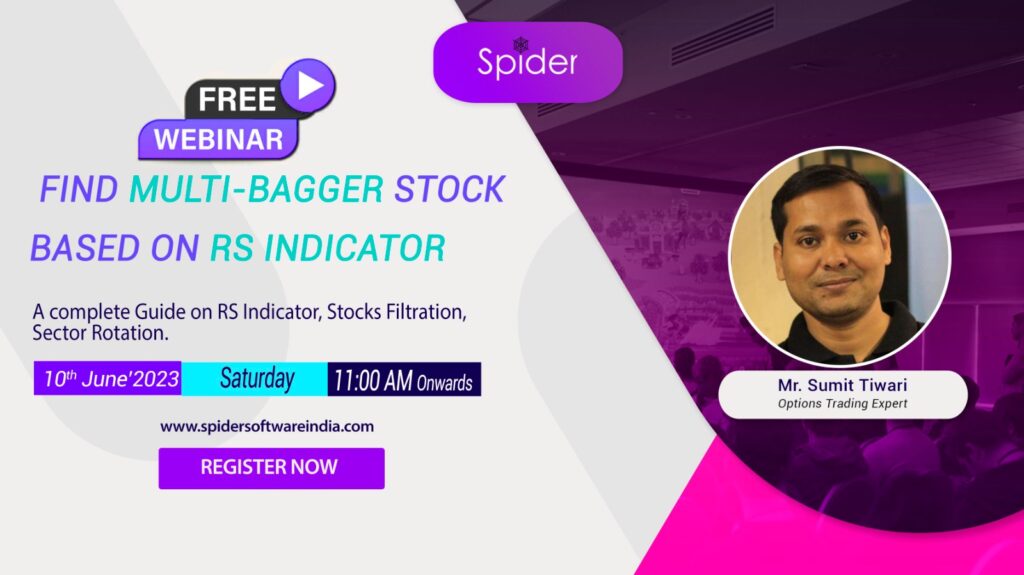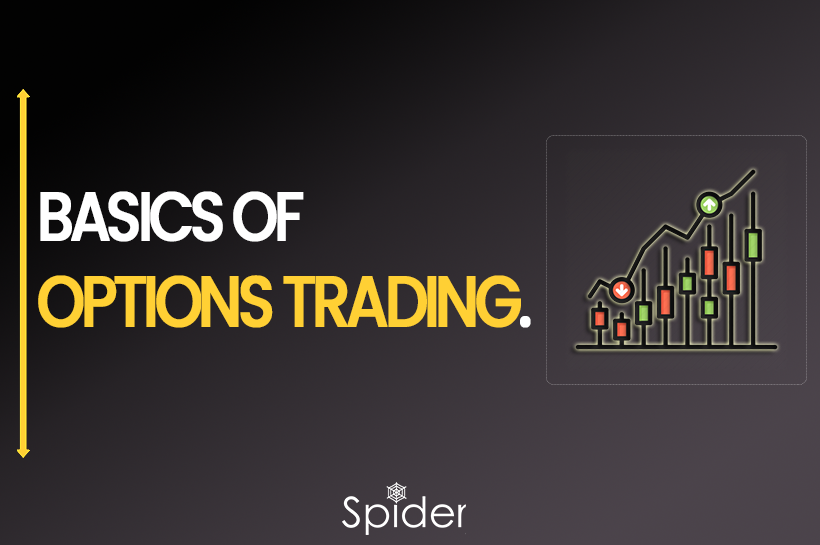Options trading is buying and selling contracts for assets at specific prices. It offers profit opportunities and risk management but requires an understanding of terms like strike price, expiration, premium, and volatility.
Explaining Options Trading?

Options are contracts that allow you to buy or sell an asset at a specific price before a certain date. They can be bought through investment accounts and offer benefits such as extra income, protection, and leverage. For example, you can use options to protect your investments from market declines, similar to having insurance for your home or car. Options were initially created for hedging, which means reducing risk at a reasonable cost.
While options may initially seem puzzling, they hold exciting opportunities for traders to forecast the direction of the Nifty 50, for example, a prominent stock index representing the entire Indian market. Rest assured, options trading is simpler than it seems, offering a world of possibilities.
If one coming into Options, they’ve to understand some key terms to understand the concepts of Intra Day. They are:
1. Call Option and Put Option: A call option allows you to buy a security at a predetermined price by a specified date,
while a put option enables you to sell a security at a future date and price.
2. Strike Price and Expiration Date: The strike price is the predetermined price mentioned earlier. Traders have until the option contract’s expiration date to exercise the option at this price.
3. Premium: The price to buy an option is called the premium. It is calculated based on the underlying security price and other factors.
4. Intrinsic Value and Extrinsic Value: Intrinsic value is the difference between the option’s strike price and the current price of the underlying asset. The extrinsic value represents additional factors, like time remaining until expiration, that affect the premium.
5. Types of Money:
- In-the-Money: When an option is in-the-money, it means it has intrinsic value and would be profitable if exercised immediately. For a call option, this happens when the underlying asset’s price is higher than the strike price. For a put option, it occurs when the underlying asset’s price is lower than the strike price.
- Out-of-the-Money: An option is out-of-the-money if it lacks intrinsic value and would not be profitable if exercised immediately. For a call option, this occurs when the underlying asset’s price is lower than the strike price. For a put option, it happens when the underlying asset’s price is higher than the strike price.
- At-the-Money: When an option is at the money, the underlying asset’s price equals the strike price. In such cases, the option does not have any intrinsic value.
How are the Prices in the Options determined?
With options, you pay a premium to have the choice to either buy (call options) or sell (put options) the stock at a specific price (strike price) by a certain date (expiration date). Let’s simplify the options terminology with an example.
Suppose there is a stock trading at INR 50 per share. Here’s how the premiums and options function based on different strike prices:
- Call Options:
A lower strike price, such as INR 40, has more intrinsic value for call options. It allows you to buy the stock at a lower price than its current trading value of INR 50. If the stock remains at INR 50, your call options are in-the-money, allowing you to purchase the stock at a discounted price.
Conversely, a higher strike price, like INR 60, has less intrinsic value for call options. The stock would need to increase in value above INR 60 for your options to be profitable.
- Put Options:
A higher strike price, such as INR 60, is more valuable for put options. It allows you to sell the stock at a higher price than its current trading value of INR 50. If the stock remains at INR 50, your put options are in-the-money, enabling you to sell the stock at a higher price than its current value.
Conversely, a lower strike price, like INR 40, has less intrinsic value for put options. The stock would need to decrease in value below INR 40 for your options to be profitable.
Remember, options provide flexibility to buy or sell an asset at a predetermined price, offering potential gains based on the movement of the underlying stock.
The Process of Options Trading.

Options trading offers various strategies, ranging from simple to complex. By trading call options, you can bet on prices rising, while trading put options allows you to speculate on prices falling.
Options contracts grant the right to buy or sell a minimum of 100 shares of an asset, but there’s no obligation to exercise them if they’re not profitable. This means the only potential loss is the premium paid. Options trading is a cost-effective way to speculate on different asset classes.
With options, you can speculate on:
Whether the price of an asset will rise or fall.
How much the price will change.
When these price changes will occur.
To profit from options:
Call options: Once the price of the underlying asset surpasses the break-even point, you have the option to sell the call option, closing your position and profiting from the difference between the premium paid and the current premium. Alternatively, you can choose to exercise the option and buy the underlying asset at the predetermined strike price.
Put options: When the price of the asset falls below the break-even level, you have the option to sell the options contract, closing your position and earning the difference between the premium paid and the current premium. Another choice is to exercise the option and sell the underlying asset at the predetermined strike price.
If the asset’s price moves unfavorably, you can let the contract expire, and your losses will be limited to the amount paid for the option.
Advanced traders can employ complex strategies involving multiple calls or put options with different strike prices or expiration dates.
Benefits of Options Trading.
Options trading combines specificity and flexibility. Traders choose a strike price and expiration date to predict the asset’s price movement within a timeframe. They can assess the situation and choose not to execute a trade if they are wrong.
Options contracts have an expiration date, appealing to traders who want shorter exposure to an asset. Traders monitor the underlying asset’s price to determine if they are profitable or want to exercise the option.
Options trading is also useful as a hedging tool. For example, owning shares and buying put options can protect against potential stock price declines. This makes options popular as a short-term hedge for market declines.
Options trading is cost-efficient, offering speculative bets with lower risk and potentially high returns, allowing for a strategic investment approach.
Some Limitations of Options Trading.
Options trading isn’t suitable for everyone, especially those who prefer a hands-off investing approach. Before you start trading options, brokers will assess your understanding of the risks involved.
To make money, you must closely monitor the market, set price alerts, and consider the fees that can affect profitability. Options trades are usually short-term, and any profits within a year are subject to higher taxes. So, it’s crucial to carefully consider your investment goals, risk tolerance, and costs before getting into options trading.
To Sum Up
Options Trading is a dynamic strategy for not only traders but also for investors to profit from asset price movements.
With careful consideration of direction, price, and time, traders can navigate the risks and potential rewards. Brokers’ requirements and fees impact the overall profitability.
Understanding the basics, evaluating goals and risks, and staying informed is crucial for success in options trading.
Get a chance to learn how to find various Multi-Bagger Stocks using the RS Indicator.

Also, Check out our article on TRADING PSYCHOLOGY – The most important aspect of Trading?
Disclaimer: The information provided in this Blog is for educational purposes only and should not be construed as financial advice. Trading in the stock market involves a significant level of risk and can result in both profits and losses. Spider Software & Team does not guarantee any specific outcome or profit from the use of the information provided in this Blog. It is the sole responsibility of the viewer to evaluate their own financial situation and to make their own decisions regarding any investments or trading strategies based on their individual financial goals, risk tolerance, and investment objectives. Spider Software & Team shall not be liable for any loss or damage, including without limitation any indirect, special, incidental or consequential loss or damage, arising from or in connection with the use of this blog or any information contained herein.





